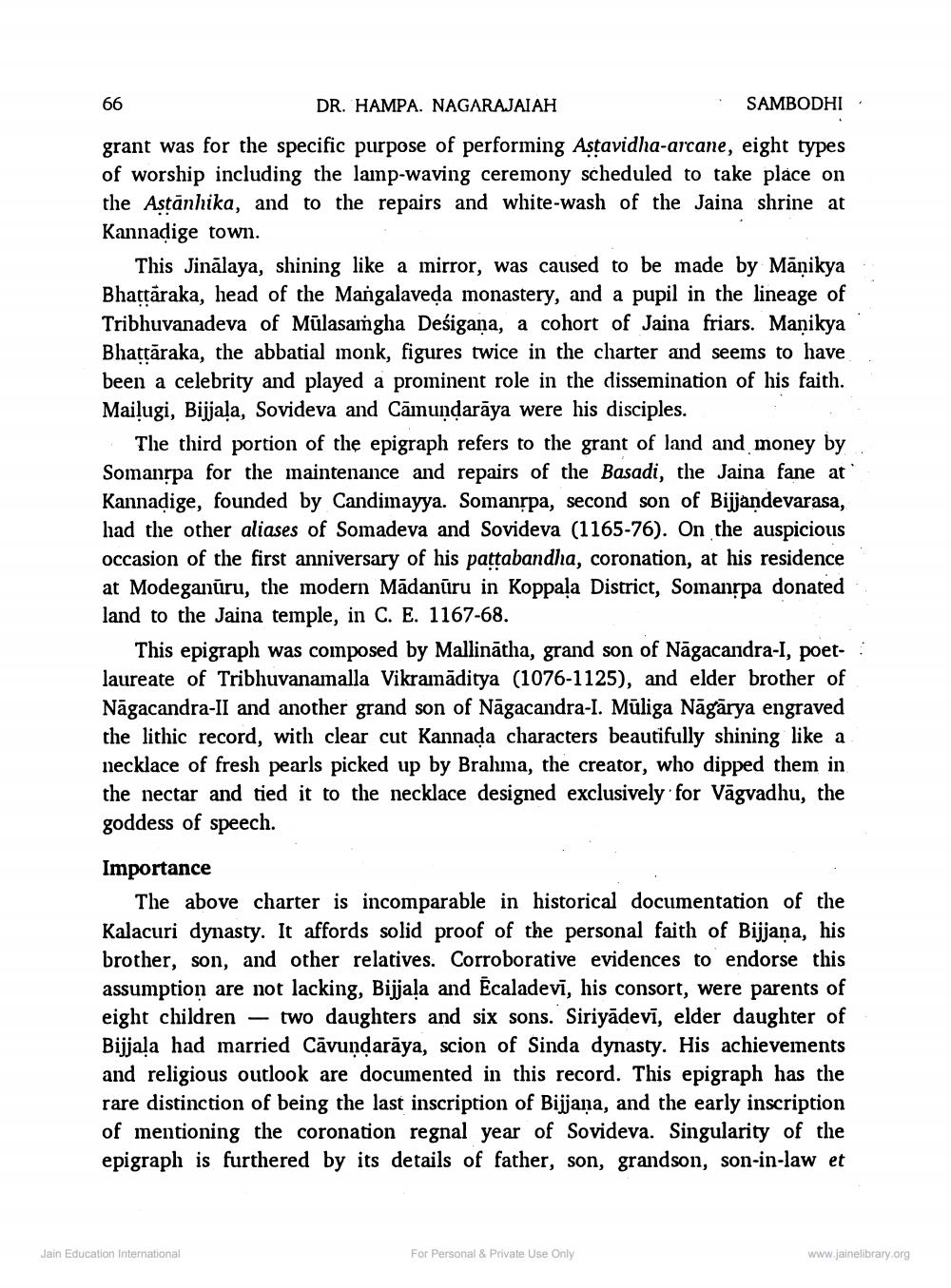________________
DR. HAMPA. NAGARAJAIAH
SAMBODHI
grant was for the specific purpose of performing Astavidha-arcane, eight types of worship including the lamp-waving ceremony scheduled to take place on the Astānhika, and to the repairs and white-wash of the Jaina shrine at Kannadige town.
This Jinālaya, shining like a mirror, was caused to be made by Manikya Bhattaraka, head of the Mangalaveda monastery, and a pupil in the lineage of Tribhuvanadeva of Mūlasamgha Desigana, a cohort of Jaina friars. Manikya Bhattāraka, the abbatial monk, figures twice in the charter and seems to have been a celebrity and played a prominent role in the dissemination of his faith. Mailugi, Bijjala, Sovideva and Cāmundarāya were his disciples.
The third portion of the epigraph refers to the grant of land and money by Somanspa for the maintenance and repairs of the Basadi, the Jaina fane at Kannadige, founded by Candimayya. Somanrpa, second son of Bijjandevarasa, had the other aliases of Somadeva and Sovideva (1165-76). On the auspicious occasion of the first anniversary of his pattabandha, coronation, at his residence at Modeganūru, the modern Mādanūru in Koppala District, Somanrpa donated land to the Jaina temple, in C. E. 1167-68.
This epigraph was composed by Mallinātha, grand son of Nāgacandra-I, poet- : laureate of Tribhuvanamalla Vikramāditya (1076-1125), and elder brother of Nāgacandra-II and another grand son of Nāgacandra-I. Mūliga Nāgārya engraved the lithic record, with clear cut Kannada characters beautifully shining like a necklace of fresh pearls picked up by Brahma, the creator, who dipped them in the nectar and tied it to the necklace designed exclusively for Vāgvadhu, the goddess of speech.
Importance
The above charter is incomparable in historical documentation of the Kalacuri dynasty. It affords solid proof of the personal faith of Bijjana, his brother, son, and other relatives. Corroborative evidences to endorse this assumption are not lacking, Bijjala and Ecaladevī, his consort, were parents of eight children - two daughters and six sons. Siriyādevī, elder daughter of Bijjala had married Cāvundarāya, scion of Sinda dynasty. His achievements and religious outlook are documented in this record. This epigraph has the rare distinction of being the last inscription of Bijjana, and the early inscription of mentioning the coronation regnal year of Sovideva. Singularity of the epigraph is furthered by its details of father, son, grandson, son-in-law et
Jain Education International
For Personal & Private Use Only
www.jainelibrary.org




